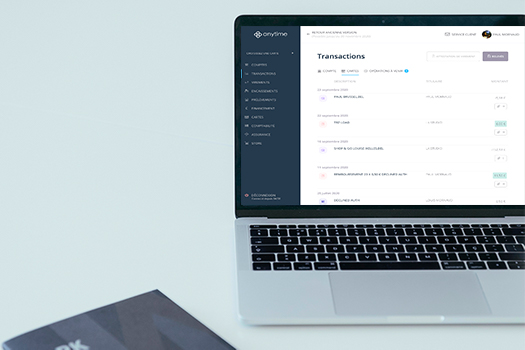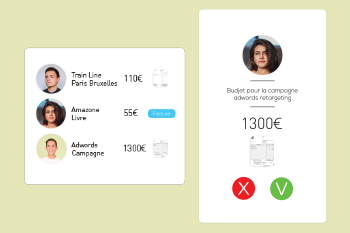Le mandat postal est un moyen de faire parvenir de l’argent liquide à une personne, en France ou dans le monde. C’est une solution qui peut être très pratique dans certains cas, mais qui est pourtant délaissée depuis quelques années. C’est la raison pour laquelle certains mandats ont été supprimés par La Poste. Un point sur le mandat postal et le transfert d’argent.

Le mandat postal, de quoi s’agit-il ?
En 1995, La Poste proposait pour la première fois le mandat postal, son service de transfert d’argent de particulier à particulier. Par définition, le mandat postal est un transfert d’argent liquide qui s’effectue par le biais de La Poste. Néanmoins, il peut aussi être réalisé par l’intermédiaire d’une banque ou d’une société de courtage. À l’origine, ce type de transaction avait été mis en place pour répondre aux besoins de certains usagers, notamment ceux qui : + ne disposaient pas de compte bancaire + ne possédaient aucun autre moyen de paiement (virement, carte bancaire, chèque) que l’espèce + n’étaient pas en mesure de présenter un justificatif de domicile
Le mandat leur permettait donc de retirer rapidement l’argent qui leur avait été envoyé. Il était possible de transférer jusqu’à 1 500 € par opération.
Rapide et simple, le mandat postal était décliné en 2 versions : + le mandat cash ordinaire, qui permettait de recevoir l’argent sous 24 heures + le mandat cash urgent, grâce auquel le bénéficiaire pouvait aller retirer l’argent presque immédiatement Le 28 août 2017, La Poste a dit adieu au mandat cash urgent. Puis, le 1er janvier 2018, le mandat cash ordinaire a lui aussi été abandonné.
Pourquoi le mandat postal disparaît-il ?
Sur ces 5 dernières années, l’usage du mandat cash a chuté de 25 %. Cela s’explique par le fait qu’aujourd’hui, 99 % des ménages possèdent au moins un compte courant ou une solution bancaire. Grâce aux nouvelles technologies, notamment aux banques en ligne et néobanques qui proposent des cartes prépayées, les adolescents et interdits bancaires peuvent aussi disposer d’une solution de paiement et d’un RIB sur lequel se faire virer de l’argent.
Puis, toujours grâce à l’avènement des nouvelles technologies, le virement est plus populaire que jamais. Il faut dire qu’il s’agit d’une solution à la fois simple et peu coûteuse. En effet, aujourd’hui, presque tout le monde possède un espace sécurisé en ligne sur lequel il est possible de réaliser des virements en quelques clics. Solution encore plus pratique, l’application mobile qui permet de gérer ses comptes depuis un smartphone. Ainsi, il est possible de réaliser une opération à n’importe quel moment, et ce quel que soit le lieu où l’on se trouve. Là où les banques traditionnelles proposent encore des délais de transfert, les néobanques offrent souvent des virements quasi immédiats. Raison pour laquelle dire définitivement adieu au mandat postal qui obligeait à se déplacer en agence pendant les heures d’ouverture. D’autant plus que ces nouvelles solutions sont plus sûres.
Certains mandats postaux existent toujours
Si les 2 mandats nationaux ont été supprimés, d’autres mandats postaux existent encore. Il s’agit des mandats internationaux qui permettent de transférer de l’argent d’un pays à un autre.
Le mandat ordinaire international
Le mandat ordinaire international permet de transférer jusqu’à 3 500 € d’espèces vers 52 pays et territoires, et ce par l’intermédiaire de 600 000 points de vente.
Le tarif de cette solution est relativement faible, mais le délai d’acheminement correspond à celui d’un courrier. Ainsi, il faut compter 4 à 5 jours pour recevoir l’argent en Europe et 8 à 10 jours en Afrique.
Pour envoyer un mandat ordinaire international, l’expéditeur doit simplement se rendre dans un bureau de poste avec sa pièce d’identité. Il remet ensuite au guichetier le montant à transférer en espèces ou par carte bancaire. Puis, lorsque la somme est disponible, le bénéficiaire reçoit un chèque ou un avis à l’adresse indiquée par l’expéditeur. Il ne lui reste plus qu’à se présenter dans l’un des points de vente du réseau postal de son pays pour retirer l’argent en monnaie locale.
Le mandat express international
Comme le mandat ordinaire international, le mandat express international permet de transférer jusqu’à 3 500 €. Le délai de transfert est quant à lui plus court puisqu’il est de 24 heures. Cette option n’est toutefois disponible que dans 34 pays. Le transfert peut être effectué dans un bureau de poste, en procédant de la même manière que pour un mandat ordinaire international, ou en ligne 24/7. Plus pratique, cette seconde solution permet à l’expéditeur de suivre l’exécution du mandat postal.
Le mandat Western Union
Le mandat Western Union permet de transférer jusqu’à 7 600 € à l’international dans un délai très court. En effet, l’argent transféré est disponible dans les minutes qui suivent la transaction, ce qui est idéal pour répondre à une situation urgente. Le mandat Western Union peut être effectué dans un bureau de poste ou dans 510 000 points de vente répartis dans plus de 200 pays et territoires.
Pour effectuer un mandat Western Union, l’expéditeur doit présenter une pièce d’identité valide et remettre au guichetier la somme à transférer en espèces ou par carte bancaire. Ce dernier lui transmet en contrepartie un reçu sur lequel figure un numéro de transfert qu’il doit communiquer au destinataire.
Il est également possible de transférer de l’argent en ligne, mais le montant maximum est de 5 000 €. 2 possibilités sont alors proposées : un retrait en espèces ou un transfert sur le compte bancaire du bénéficiaire. À noter que le transfert bancaire nécessite 3 jours.
Pour pouvoir retirer l’argent, le destinataire doit présenter le numéro de transfert qui lui a été communiqué et répondre à une question secrète.
Avec la présence de plus en plus forte de banques en ligne et néobanques qui permettent de réaliser des virements à l’international aussi simplement qu’en France, et pour un coût minime, voire inexistant, il est justifié de croire que ces formes de mandats postaux peuvent être amenées à disparaître. Quoi qu’il en soit, professionnel comme particulier, Anytime met à votre disposition une application intuitive qui vous permettra de tout gérer du bout des doigts, partout dans le monde.







